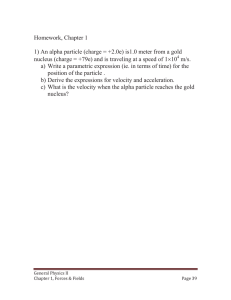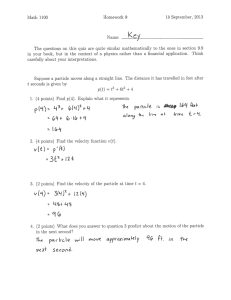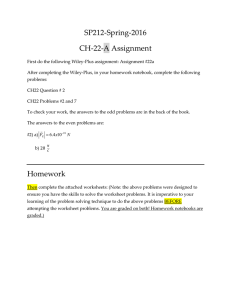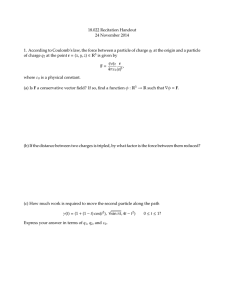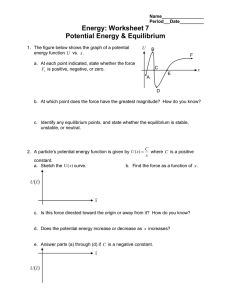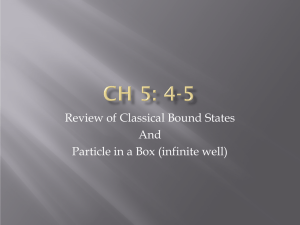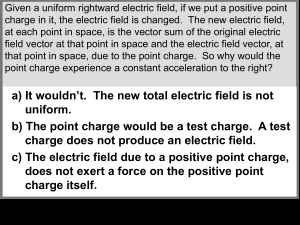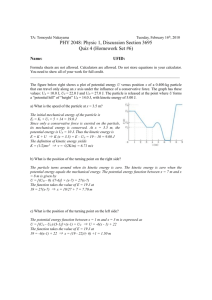Potential Energy Curve Example The figure below shows a plot of
advertisement
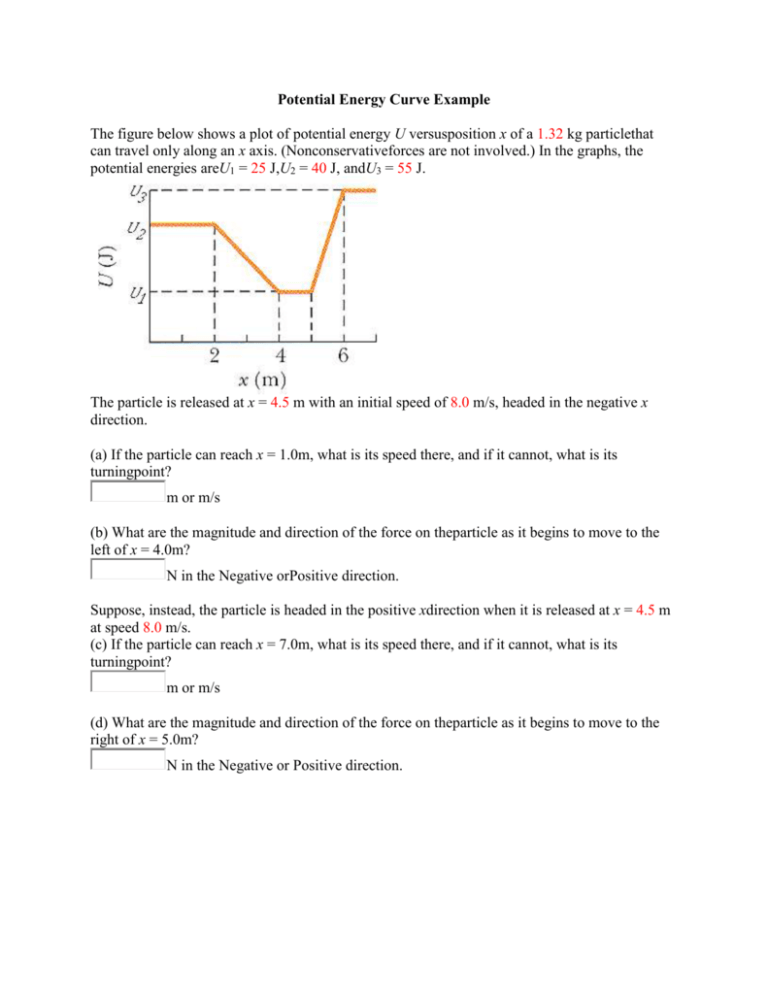
Potential Energy Curve Example The figure below shows a plot of potential energy U versusposition x of a 1.32 kg particlethat can travel only along an x axis. (Nonconservativeforces are not involved.) In the graphs, the potential energies areU1 = 25 J,U2 = 40 J, andU3 = 55 J. The particle is released at x = 4.5 m with an initial speed of 8.0 m/s, headed in the negative x direction. (a) If the particle can reach x = 1.0m, what is its speed there, and if it cannot, what is its turningpoint? m or m/s (b) What are the magnitude and direction of the force on theparticle as it begins to move to the left of x = 4.0m? N in the Negative orPositive direction. Suppose, instead, the particle is headed in the positive xdirection when it is released at x = 4.5 m at speed 8.0 m/s. (c) If the particle can reach x = 7.0m, what is its speed there, and if it cannot, what is its turningpoint? m or m/s (d) What are the magnitude and direction of the force on theparticle as it begins to move to the right of x = 5.0m? N in the Negative or Positive direction. Total energy = KE + PE = E = 25 + 1/2 m v2 = 25 +1.32 * 64 / 2 = 67.2 J Since forces are conservative the total energy is always 67.2J a) E1 = 67.2 - 40 = 27.2J kinetic energy at x = 1 1/2 m v2 =27.2 v = √(54.4 /1.32) = 6.42 m/s b) F = - ΔV / Δx = 15 / 2 = 7.5N (ΔV and Δx have different signs) F is postive and directed to the right c) Again E = 67.2 J It's KE at x = 7 is 67.2 - 55 = 12.2 J v = √(2 * 12.2 / 1.32) = 4.30m/s d) F = - ΔV / Δx = - 30 / 1 = - 30 N



